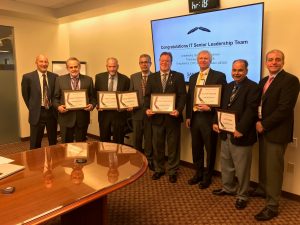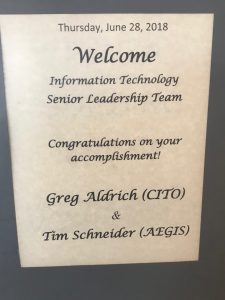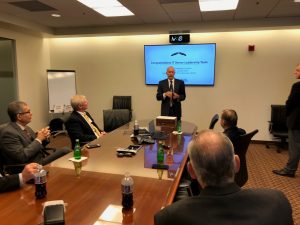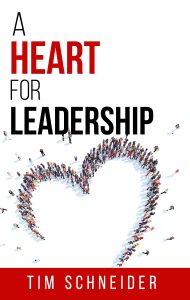Author: TimSchneider
Video Library – CEO Mindset
Leading Edge – Volume 72 – CEO Mindset: Introduction

Leading Edge – Volume 71 – Online Learning is Here

Time Mastery
Priorities and Focus are Keys to Great Time Management
How many times have we heard ourselves or others say there aren’t enough hours in the day? We all seem so busy. But being busy does not mean we are productive. We are often absorbed in low level tasks or worse yet nonproductive behavior falling victim to a self-engineered lack of time. However, when we have a plan, know what is important and focus on our priorities it is amazing how much we can accomplish.
IF IT IS NOT ON THE LIST IT WILL NOT GET DONE
Good leaders have a daily plan. Even if the plan is interrupted or we have one of those days where the unexpected takes over there is still significant value in the planning process. Everything needs to go on the daily plan. It all needs to be in one place. Eliminate using multiple systems, choosing instead a single system that is easy to use.
The plan must include tasks, projects, appointments, meetings, notes and other pertinent information for all facets of life. If an event, meeting, or task is not planned prepare for it not to occur. Tip: Perform least favorite task first to avoid procrastination.
BE SINGLE MINDED AND FOCUS
Good time management requires discipline, the creation of good habits and the elimination of bad habits. Patterns of thought and action develop over the course of a lifetime. They impact our quality of life and interactions. Once we become conscious of the patterns we have formed we can revisit them and make new choices. Just as we have power to create patterns of thought and action we have the power to change them.
Time mastery involves adding new habits and dropping nonproductive ones. Identify a few new habits to control and master that would give more time each day to engage in critical leadership activities like coaching, visioning and mentoring. Tip: When the task requires deep concentration alternate your focus in 30-minute increments, shifting to a lighter easier task for a mental break.
ELIMINATE TIME PARASITES
A time parasite is any event or activity that saps productive time. They can be personal, part of the everyday workday, or single events. They sap valuable and productive time. They cause interruptions requiring restarts of thought. They can become habitual and expected. Most are ones we control or are behaviors of others that we have accepted or reinforced or occur due to lack of established boundaries.
The key to managing a time parasite is to identify, diagnose and apply a strategy to it. For every time parasite there is a strategy for reduction or elimination. Some of the common time parasites are meetings, personal calls, correcting other people’ s mistakes, failing to delegate, email and web surfing.
MEA CULPA AND LESSONS LEARNED
I am going to focus on a couple of time parasites that challenged me as new leader. These fall under the adage of when I know better I do better.
Meetings. Personal confession: When I promoted into a leadership role I became responsible for convening and conducting meetings. I naively gave little thought to the art and skill of facilitating management meetings. Just set a time, place, invite people and then talk. Right? Wrong! My meetings were marathon feats of endurance that tested the attention span, patience and bladder of even the heartiest team member. Participants adjourned wondering what had been accomplished. Tips: Keep meetings to an hour. Always have an agenda and defined purpose. At the end recap and review critical items and next steps.
Personal Calls. This time parasite showed up for me under the guise of being a good parent and spouse. Calls from my child that he forgot his lunch, his math homework, his gym uniform. Calls to my spouse: what do you want for dinner, do you have a grocery list for me? A couple of these interruptions each day can add up to over an hour of lost productivity and impacted focus. In hindsight these calls were unnecessary. Leaders set the boundaries for friend and family calls at work. They control whether they respond. Added bonus. Not responding to every challenge your child has created increases the likelihood of their taking responsibility and problem solving. I remember growing up in a house where the rule was that we did not call mom or dad at work unless the house was on fire. There are positive outcomes possible if we stop taking every phone call or text from our children. In addition to increased productivity for the parent there is increased self-reliance for the child. We train our family by the behaviors we accept and the boundaries we set. Let them know that you will make uninterrupted time for them when you get home.
Productive leaders have a daily plan, focus and make good use of time at work. This in turn reduces stress and gives them more hours in the day to engage in high level leadership activities such as mentoring, team engagement, and visioning.
Leading Edge – Volume 70 – 3 Keys: Greater Happiness

Aegis Launches Online Programs
The online learning experience from Aegis Learning is different. It is better and packed with more useful content and value than any other provider. Our key features include:
- Prior Customers are Always Free! – Please Ask Us for Your Coupon Code or Check Your Email
- Lifetime Access
- Mobile Optimized-Learn on the Go with Your Phone or Tablet
- Built and Designed by Learning Professionals and Subject Matter Experts – Over 25 Years of Experience in Each Program
- Downloadable Program Guides and Books (Also Free)
- Learning Self-Assessment and Evaluation
- Online Learning Community and Discussion Groups – Share and Ask
- Completion Certificate – Download or Print
Award Winning Follow-Up Tools (More Free Features)
- Leading Edge Newsletter
- iCoach App
- Article Library and Research Reports
- Inspirations Library
- 24 Hour, 7 Days Per Week Customer Care and Support
And what about a great price?
$39.00!!
Compare to $99.00 or more from other online learning providers.
Leading Edge – Volume 68 – 3 Keys: Public Speaking

Leading Edge – Volume 69 – 3 Keys: Better Email

Becoming a Deliberate Responder
A deliberate responder is someone who has listened and then intentionally decides what, how and when to respond, avoiding the pitfall of reacting without consideration or reflection. Successful leaders are able to control their emotions and measure their responses, earning respect and trust, and significantly decreasing misunderstandings and overreactions.
Here are 4 steps to help you become a deliberate responder:
1. Learn to pause or delay as needed.
Take a moment to yourself prior to responding. This can be a few seconds or a few minutes. This gives you time to: assess if you understood correctly and have all the information; breath and control your temper or emotions; plan a measured, non-sarcastic response. For highly emotional issues, waiting a few hours or a day, may be more appropriate. A good leader is able to recognize when his or her emotions are triggered and will delay responding until he or she has had a chance to calm down and logically consider all the information.
I once had a team member tell me in confidence that he had witnessed another team member do something dangerous, stupid and against policy. I immediately reacted by summoning this team member and asking him why he did such a bone-headed thing. I was upset that he would make such a mistake, and told him the consequences could have a long-term, career-damaging effect. I could sense his growing fear and confusion in his response. Fortunately, we had a sufficiently trusting relationship, that he overcame his fear and I was able to calm down while we spoke. It then became apparent that the first person did not have all the facts and had actually misinterpreted the situation entirely. Not only did I nearly create a permanent impairment in my team member’s career, but I felt like a real jerk for not calming down and finding out what really happened before reacting.
2. Avoid sarcasm or sarcastic remarks.
While jokes are fun with friends, as a general rule, once you become a supervisor, you should avoid making sarcastic comments to your team. The risk that your sarcasm could be misinterpreted outweighs any intent to be perceived as funny or intelligent. In fact, a sarcastic tone can easily be mistaken for a condescending one. I once received some feedback which indicated that I had a sarcasm problem. My immediate thought was “that’s stupid! Whoever said that doesn’t know what sarcasm is!” But, I put on my big-boy pants and proceeded to validate that feedback. Through asking trusted co-workers and my own self-reflection, I realized that I had the tendency to try and make a quick-witted comment or quip every time someone spoke to me, like I was an actor on a sit-com. These comments were so full of sarcasm that it created the feeling among some of my team that I was just trying to belittle them and show my superiority. I realized my sarcastic tone and impulsive responses were alienating my team and preventing serious dialogue from occurring. With a concerted effort to restrain myself, I was able to control myself and began taking a moment to consider my replies and how I delivered them. This increased the trust and dialogue within my team, improving our morale and productivity.
3. Plan your response and practice your tone.
Planning and rehearsing how you will respond to a specific inquiry or comment will help prevent over-reactions. You were once in your team members’ shoes and should be able to anticipate many of their concerns and questions, (both specific/personal and general/organizational). When one of these issues is brought up, pause and consider the appropriate pre-planned response, adapt it to the current inquiry, then deliver it. Remember this is not a memorized speech, it is simply anticipating what conversations may occur, and preparing how to handle them. As you do this, you increase your ability to not emotionally over-react and to provide a confident response with the appropriate tone.
4. Sincerity: Congruence between your verbals and non-verbals.
As with all communication, your tone and non-verbals need to match your verbal message. Having prepared and practiced responses will go along way to helping you keep your non-verbals in alignment with your words. When your verbals and non-verbals are in alignment, the risk of misinterpretations and misunderstandings decreases dramatically. This congruency also demonstrates sincerity in the communication. When your team knows you are sincere in your responses, trust and loyalty are strengthened.
Becoming a deliberate responder by learning to control your emotions, gather sufficient information and make a calm, confident and sincere response, it not easy. It takes daily effort and practice over time. But using these four principles consistently, any leader can improve his or her skills in this area.
I know it is possible because, as you saw in the examples, this was a weakness for me. Through concerted and focused effort, I became very adept at deliberately responding. Not perfect, but I keep practicing daily and get better all the time. If I can do it, I know anyone can.











